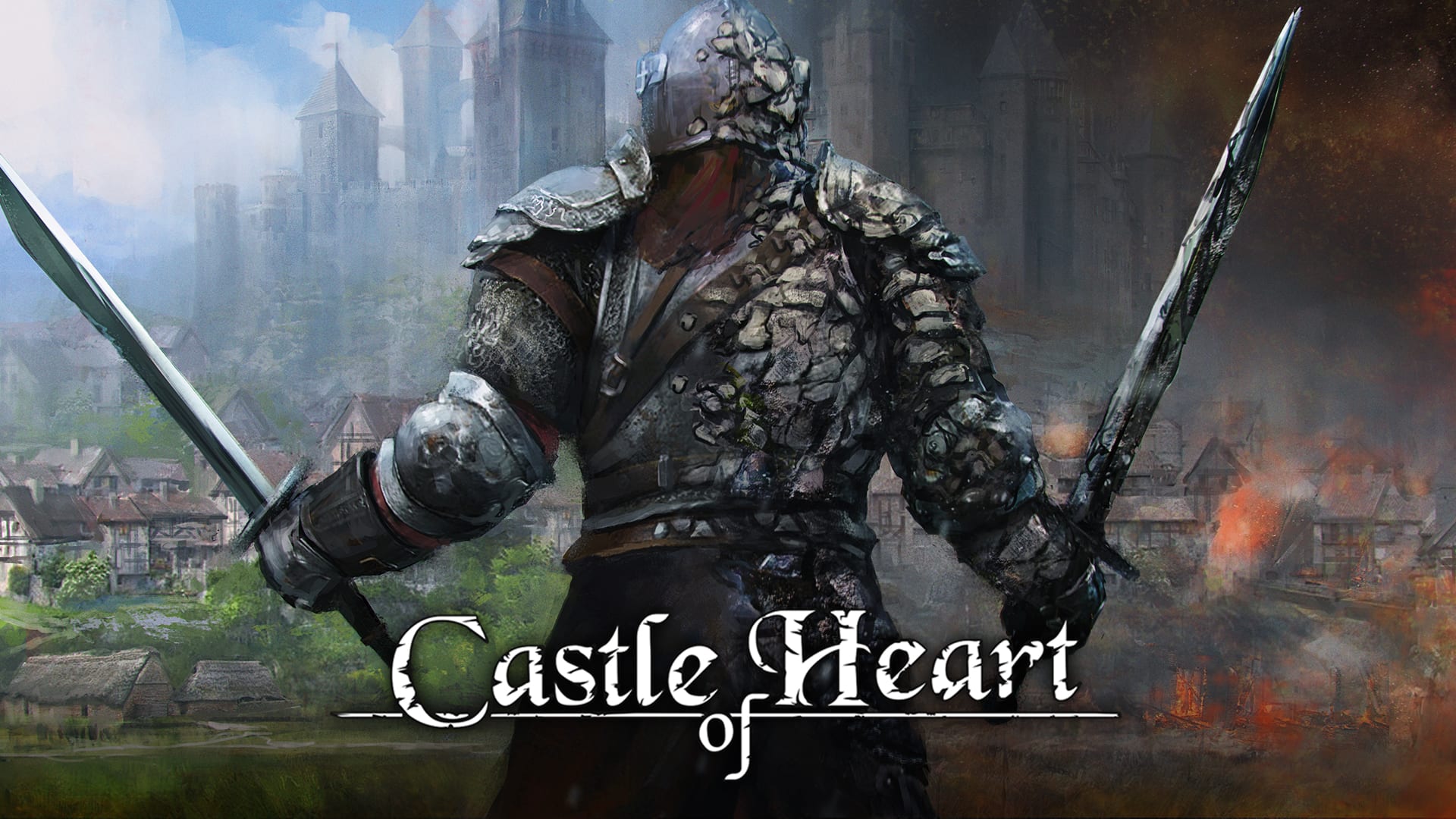Castle of Heart lets the player fight and platform through four unique environments, slashing possessed peasants and monstrous foes with over 50 weapons and consumable items. The premise sounds like a good time, but Castle of Heart is executed in such a fashion that it falters in almost every way.
Developed by 7Levels, an indie studio based in Poland, Castle of Heart is a fantasy-themed action platformer exclusive to the Nintendo Switch. The player takes the role of an unnamed knight turned to stone after protecting his love from an evil sorcerer. The sorcerer kidnaps your lover, and now you have to get her back.
As a platformer, Castle of Heart should have smooth controls and great level design. Perhaps it’s an emulation of the character you play – a knight of stone – but I don’t think platforming should be this clunky and unresponsive. There is a simple jump button as well as a roll, but the roll is extremely situational, and can be ignored for the majority of the game. There is no precision in Castle of Heart. The frustrating movements of the knight inhibit any sort of precision, which is further worsened by the abysmal level design.
There are a total of 20 levels through four different environments – a village, swamp, mountain and castle. With each level comes different obstacles, each more annoying than the next. There’s spike pits, rolling logs, and arrows hailing from above, but each poses as more of an inconvenience than a true challenge. This is the greatest fault of Castle of Heart: inconvenience takes the place over difficulty.
As you make your way past the various environmental hazards and enemies within the levels, there are checkpoints that save your progress. I’ve found that many times when you are at low health and can see the checkpoint close by, a hidden trap or final obstacle will be in front of it in an attempt to kill you – the developers might have seen this as a challenge, but it acts as a nuisance more than anything else.
Traps and hazards aside, the platforms themselves – which are integral to a platformer – are so sloppily done that the game ends up being unfair. Terrible placement of platforms and overall level design combined with the unresponsive controls create even more frustration. This is combined with the fact that the levels go on for far too long. Once I thought a level was done, but it just kept going. There are also collectible gems of some sort – it wasn’t too clear – that are hidden in ridiculous spots and serve no clear purpose. But, for those who are completionists, that option is there.
Combat is the second main component to the gameplay in Castle of Heart, but is just as poor and janky as the platforming. One button is dedicated to attacking various enemies throughout the stages. Most enemies are mindless and run at you, posing as another obstacle in the way. You can choose to attack them, which isn’t satisfying in the least. Attacks have no weight to them, so at some times the game becomes a mindless hack-and-slash. A block button can be used to parry enemy attacks, but it’s mostly useless – this is due to the fact that you are constantly taking damage.
Constant damage is a mechanic in the game that is present whether you are in combat or not. As a knight made of stone, you are crumbling from the sorcerer’s curse. The intention is to create a fast-paced, action-packed platformer, but it doesn’t work like that. Being attacked by enemies on top of taking constant damage means that it is often a huge risk to even initiate in combat. Instead of fighting, I would just sprint through the levels as fast as I could, taking the floating health pickups and using the checkpoints’ health refill as a way to get to the end. This turned into a much better strategy than fighting every enemy, which would be an absolute bore to do otherwise.
A special attack can be used on enemies with a higher health pool to finish them off faster, another needless addition. This attack hurts you, so there isn’t a point in using it. It makes you extremely vulnerable to enemy attacks as well, so the risk far outweighs the reward.
In some instances you will inevitably be forced to fight whilst in cramped quarters; the best option is to use a second weapon, which is equipped in your other hand, for a boost of damage. There are ranged weapons like the crossbow that can shoot enemies from afar, but I found the most useful to be an extra melee weapon which boosts your damage significantly. Consumable items like elemental bombs and throwing knifes can be used on pesky enemies as well, which thankfully adds a bit of variation in the combat.
The final level in each environment also has a boss battle. The less that is said about these the better, because they require you to mindlessly dodge and attack for much longer than you would any other enemy.
It’s not all doom and gloom. The graphics are mediocre but colorful enough that some of the environments took my interest. Many of the monster’s designs are interesting, as they are supposedly inspired by Polish folklore. The backgrounds in the levels are charming enough as well. The music was medieval European, and I think that it was quite well-made. The music always appropriately fit the theme of the level.
Castle of Heart comes down to how much patience you have to deal with ridiculously-placed obstacles and if you’re into repetitive button-mashing combat. It’s a poorly designed game that fails to deliver any sort of engaging game play, and ultimately you’ll wonder why you spent $15 on Castle of Heart rather than on one of the much better platformers found on the Nintendo Switch.
